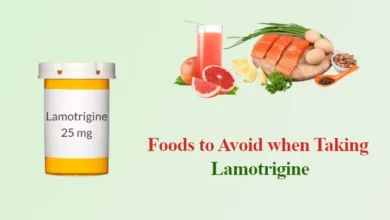Difference Between Ringworm vs Psoriasis

Are you curious about the difference between ringworm vs psoriasis? If so, you’re not alone. Both conditions are often confused with each other, and it’s essential to know the difference so that you can get the treatment that’s right for you.
In this article, we will discuss the differences between these two skin conditions in detail so that you can decide which one is right for you. We also provide helpful tips on identifying and treating each condition. So, if you’re looking for information on the differences between these two skin conditions, read on!
In this Article
- Difference Between Ringworm vs Psoriasis
- Ringworm vs Psoriasis: Difference in signs and symptoms
- Red Circle on Skin not Ringworm
- Red Circle on Skin not itchy
- Half moon Shaped Rash
Difference Between Psoriasis and Ringworm

Ringworm is a type of fungal infection that affects the skin and scalp. It most commonly occurs in children but can also affect adults. Ringworm is usually treated with topical creams or ointments. Psoriasis is a chronic skin disorder that causes red, scaly patches on the skin. It can be very itchy and difficult to treat. Psoriasis often requires long-term treatment with topical medications and phototherapy.
In size, ringworm patches are two to four inches in diameter, while psoriasis patches vary in size.
In Appearance, ringworm patches can appear as individuals or in groups. In comparison, psoriasis patches can join together.
Ringworm commonly appears in moist places like the armpits, foot, and groin. In comparison, psoriasis is most commonly found on the elbows, hands, feet, knees, and back of the neck.
Ringworm is usually seen 10 to 14 days after contact, while psoriasis is a chronic skin condition.
Ringworm is highly contagious and spreads quickly from person to person, while psoriasis is not infectious.
Ringworm vs Psoriasis: Difference in signs and symptoms
Ringworm and psoriasis are two common skin conditions that need attention. Here are the key differences between them so you can treat them effectively.
Ringworm signs and symptoms
- Patches of red skin that may or may not itch
- A circle with red bumps, scales, or a solid center
- Overlapping red circles
- Patches of red with uneven or irregular boundaries
- In scalp ringworm, loss of hair
Psoriasis signs and symptoms
- Dry, cracked skin that is prone to bleeding
- Inflamed skin, often covered with loose, silver-colored scales
- Pain in certain areas
- Itching or burning to feel
- Clusters of patches that cover a large area
Red Circle on Skin not Ringworm
A red circle, itchy patches and scales are signs of psoriasis called psoriasis circle, the condition may be mistaken for ringworm. Unlike ringworm, psoriasis is not a fungal infection.
A red circle on the skin, not ringworm, may also be caused by other skin conditions, such as Lyme disease, eczema, and pityriasis rosea.
Red Circle on Skin not itchy
There could be a number of reasons why the red circle on your skin might not be itchy. A few things to consider include:
- Petechiae, also known as blood spots, are small, reddish patches that appear when capillaries under the skin break. They seem flat to the touch and may resemble a rash. They can result from a number of things, including strains, sunburns, and traumas.
- You may be experiencing an allergic reaction to a new product or ingredient that has been added to your skincare routine.
Half-moon Shaped Rash
A jock itch can cause a half-moon shaped rash. A reddish skin patch is often where the jock itch starts in the groin region. It frequently forms a half-moon shape and extends to the upper thigh.
The rash may be ring-shaped and have a line of tiny blisters enclosing it. The skin may be dry or scaly and burn or itch.
Conclusion
After reading this article on ringworm vs psoriasis, you’ll better understand these two skin conditions, their symptoms, and the best way to treat them.
References
- Clinical forms of dermatophytosis (ringworm infection) – PubMed
- The Prevalence and Pattern of Superficial Fungal Infections
- (PDF) Psoriasis Pathogenesis and Treatment





